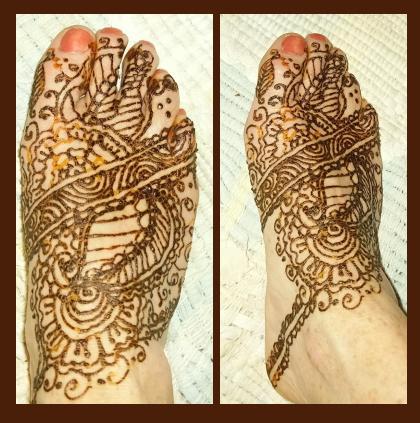Arabic Mehndi Patterns 2013-2014 Biogarphy
Source(google.com.pk)The word henna is an all encompassing word referring to each phase of henna usage. Henna is the common name of the plant Lawsonia inermis. Henna also refers to the powder made from the dried crushed leaves of the plant, the resulting paste made from the powder, the art designs, the painted paste design on one’s skin, and finally the resulting stain on one’s skin.
The henna plant is indigenous to northern Africa and southern Asia though, predominantly cultivate in Rajasthan, India. Henna has been used by humans for thousands of years medicinally, as a dye of the skin, hair, nails, and in textiles. Henna is typically applied to the skin as a blessing, for luck, and beautification and is typically part of celebrations in many cultures.
I use only 100% natural ingredients in my henna paste recipe including lemon juice, cajuput, clove, lavender, eucalyptus, and tea tree essential oils. I use only the freshest, high potency henna powder available with organic ingredients when possible.
Arabic Mehndi Patterns Photos Pictures Pics Images 2013-2014

Arabic Mehndi Patterns Photos Pictures Pics Images 2013-2014

Arabic Mehndi Patterns Photos Pictures Pics Images 2013-2014

Arabic Mehndi Patterns Photos Pictures Pics Images 2013-2014

Arabic Mehndi Patterns Photos Pictures Pics Images 2013-2014

Arabic Mehndi Patterns Photos Pictures Pics Images 2013-2014

Arabic Mehndi Patterns Photos Pictures Pics Images 2013-2014

Arabic Mehndi Patterns Photos Pictures Pics Images 2013-2014

Arabic Mehndi Patterns Photos Pictures Pics Images 2013-2014






.jpg)








